Are you curious about why some houses stand tall on stilts? At SIXT.VN, we delve into the world of unique architectural designs, especially those prevalent in areas like Vietnam. Houses on stilts, also known as pile dwellings, offer a practical and culturally rich solution to various environmental and societal challenges, enhancing local tourism and providing sustainable living options. Discover the compelling reasons behind this elevated housing trend and how it’s shaping the future of residential design.
1. What Are the Primary Reasons for Building Houses on Stilts?
Houses are built on stilts primarily to protect against flooding, pests, and moisture, while also providing ventilation and maximizing land use, especially in regions like Vietnam. This design leverages practical and environmental benefits.
- Flood Protection: In areas prone to flooding, stilts elevate the living space above potential water levels, safeguarding homes and belongings.
- Pest and Animal Deterrence: Raising houses reduces the risk of rodents, insects, and other pests entering the living area, promoting better hygiene.
- Improved Ventilation: Stilts allow air to circulate freely beneath the house, helping to cool the interior and reduce moisture buildup, crucial in humid climates.
- Maximize Land Use: Building on stilts can preserve the natural landscape by minimizing ground disturbance, especially in sensitive ecosystems like wetlands or forests.
- Cultural and Traditional Significance: In many cultures, stilt houses are deeply rooted in tradition and reflect a harmonious relationship with the environment.
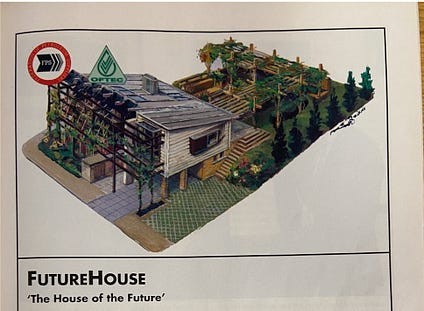 Stilt house in a rural Vietnamese village, showcasing traditional architecture
Stilt house in a rural Vietnamese village, showcasing traditional architecture
Why Are Stilt Houses Popular in Southeast Asia?
Stilt houses are particularly popular in Southeast Asia because the region’s geography and climate create a need for flood-resistant and well-ventilated homes. The elevated structure protects residents and property from rising waters during monsoon season. Additionally, the open space underneath serves as a versatile area for storage, livestock, or communal activities.
How Do Stilt Houses Adapt to Different Environments?
Stilt houses are adaptable structures used in various environments from tropical rainforests to coastal regions. In rainforests, they provide protection from wildlife and moisture, while in coastal areas, they guard against storm surges and erosion. The height and materials used in construction vary based on local conditions and available resources.
2. How Do Houses on Stilts Protect Against Flooding?
Houses on stilts protect against flooding by elevating the living space above the anticipated flood level, preventing water damage and ensuring safety. This simple yet effective method significantly reduces flood risk.
- Elevation: The primary defense is the height of the stilts, which must be tall enough to exceed the highest expected floodwaters.
- Reinforced Structures: Stilts are often made of robust materials such as concrete, steel, or treated wood to withstand flood forces and debris impact.
- Strategic Placement: Houses are strategically located to minimize exposure to strong currents and debris flow during floods.
- Community Planning: In some regions, communities collaborate to build stilt houses collectively, ensuring a uniform level of protection.
- Early Warning Systems: Combined with early warning systems, stilt houses allow residents time to move valuables and prepare for impending floods.
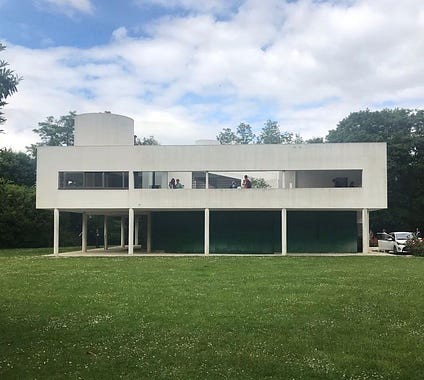 Stilt houses in a flooded area, demonstrating flood protection
Stilt houses in a flooded area, demonstrating flood protection
Can Stilt Houses Withstand Major Floods and Storm Surges?
Stilt houses can withstand major floods and storm surges if they are properly designed and constructed. Factors such as stilt height, material strength, and foundation stability play crucial roles in their ability to endure extreme weather events.
What Are the Limitations of Flood Protection in Stilt House Design?
The limitations of flood protection in stilt house design include the maximum height of stilts, which may not be sufficient for extreme floods, and the potential for structural damage from debris carried by floodwaters. Regular maintenance and reinforcement are essential to ensure continued protection.
3. How Do Stilts Help in Pest Control and Prevent Animal Intrusion?
Stilts aid in pest control and prevent animal intrusion by creating a physical barrier that makes it difficult for rodents, insects, and other animals to access the living area. This elevation strategy offers a natural and effective solution.
- Reduced Ground Contact: By minimizing contact with the ground, stilt houses reduce the pathways for pests to enter, such as through soil or vegetation.
- Clear Visibility: The open space beneath the house allows for easy detection of pests or animals, making it simpler to take preventive measures.
- Natural Predators: The elevated space encourages natural predators like birds to patrol the area, helping to control pest populations.
- Physical Barrier: Stilts act as a physical barrier, preventing larger animals from easily accessing the house and potentially causing damage.
- Improved Hygiene: The reduced presence of pests and animals contributes to a cleaner and more hygienic living environment.
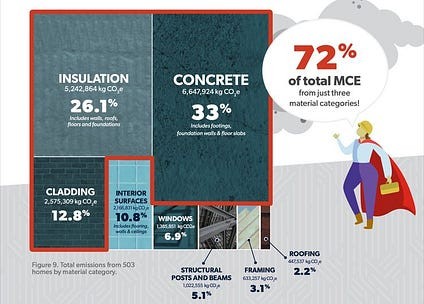 Stilt house elevated above ground, showing reduced contact with pests and animals
Stilt house elevated above ground, showing reduced contact with pests and animals
What Types of Pests Are Commonly Prevented by Stilt House Design?
Common pests prevented by stilt house design include rodents (rats, mice), insects (termites, ants, mosquitoes), and other ground-dwelling creatures like snakes and scorpions. Reducing access to these pests improves the overall living conditions.
Are There Specific Materials That Enhance Pest Resistance in Stilt Construction?
Specific materials that enhance pest resistance in stilt construction include treated wood, concrete, and steel, all of which are less susceptible to pest damage. These materials provide a solid and durable barrier against pests and animals.
4. Why Is Ventilation Improved in Stilt Houses?
Ventilation is improved in stilt houses because the open space underneath allows air to circulate freely, which helps to cool the interior and reduce humidity, making living conditions more comfortable, especially in warm climates. This natural airflow is a key benefit.
- Natural Airflow: The elevation creates space for air to flow from all directions, promoting natural ventilation throughout the house.
- Reduced Humidity: Increased airflow helps to reduce humidity levels, preventing mold growth and improving indoor air quality.
- Cooling Effect: The movement of air beneath the house helps to cool the structure, reducing the need for artificial cooling systems like air conditioning.
- Comfortable Living: Improved ventilation contributes to a more comfortable and healthy living environment, particularly in tropical climates.
- Energy Efficiency: By reducing the reliance on air conditioning, stilt houses can be more energy-efficient and environmentally friendly.
 Stilt house showing airflow underneath, enhancing ventilation
Stilt house showing airflow underneath, enhancing ventilation
How Does Ventilation in Stilt Houses Compare to Traditional Ground-Level Houses?
Ventilation in stilt houses is significantly better than in traditional ground-level houses because ground-level homes often suffer from poor airflow and trapped humidity. The elevated design of stilt houses allows for consistent air circulation, leading to cooler and drier interiors.
Can Stilt House Ventilation Reduce the Risk of Respiratory Issues?
Yes, stilt house ventilation can reduce the risk of respiratory issues by improving indoor air quality and reducing mold and mildew growth. Good ventilation helps to remove allergens and pollutants, creating a healthier living environment.
5. How Do Stilt Houses Help Maximize Land Use?
Stilt houses help maximize land use by allowing for construction on uneven terrains, preserving natural landscapes, and utilizing the space underneath the house for various purposes. This maximizes efficiency and reduces environmental impact.
- Construction on Uneven Terrain: Stilts enable building on sloping or uneven land without extensive excavation, preserving the natural topography.
- Preservation of Natural Landscapes: By minimizing ground disturbance, stilt houses help protect sensitive ecosystems, such as wetlands and forests.
- Versatile Underneath Space: The area beneath the house can be used for parking, storage, workshops, or even as a recreational area, maximizing the utility of the land.
- Reduced Footprint: The elevated structure minimizes the physical footprint on the land, allowing for more green space and natural vegetation.
- Sustainable Development: Stilt houses promote sustainable development by balancing construction needs with environmental preservation.
In What Types of Environments Are Stilt Houses Most Effective for Land Use?
Stilt houses are most effective for land use in environments such as wetlands, coastal regions, and hilly or mountainous areas, where traditional construction methods may be impractical or environmentally damaging.
What Are Some Creative Ways the Space Underneath Stilt Houses Is Utilized?
Creative ways the space underneath stilt houses is utilized include parking, storage, workshops, recreational areas, livestock enclosures, and even as commercial spaces like shops or cafes, making it a versatile and valuable area.
6. What Cultural and Traditional Significance Do Stilt Houses Hold?
Stilt houses hold significant cultural and traditional value in many societies, reflecting a deep connection to ancestral practices and local environmental knowledge. They often embody a community’s identity and history.
- Preservation of Heritage: Stilt houses represent traditional building techniques and architectural styles passed down through generations.
- Community Identity: In many cultures, stilt houses are a symbol of community identity and a reminder of shared history and values.
- Adaptation to Environment: The design of stilt houses often reflects a deep understanding of the local environment and how to live in harmony with it.
- Social Spaces: The area beneath the house can serve as a communal gathering space for families and neighbors, fostering social interaction.
- Spiritual Significance: In some cultures, stilt houses are believed to have spiritual significance, providing protection and connection to the natural world.
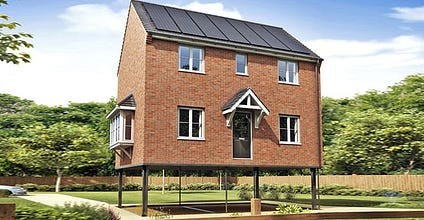 Traditional Vietnamese stilt house, showcasing cultural significance
Traditional Vietnamese stilt house, showcasing cultural significance
How Do Stilt House Designs Vary Across Different Cultures?
Stilt house designs vary significantly across different cultures, reflecting unique environmental adaptations, available materials, and cultural preferences. For example, stilt houses in Vietnam often feature thatched roofs and bamboo walls, while those in other regions may use different materials and architectural styles.
Are There Any Rituals or Customs Associated With Building or Living in Stilt Houses?
Yes, there are often rituals and customs associated with building or living in stilt houses, such as ceremonies to bless the construction site, specific orientations for the house, and traditional practices for maintaining the structure and ensuring the well-being of the inhabitants.
7. How Does Building on Stilts Impact the Environment?
Building on stilts can have a positive impact on the environment by reducing ground disturbance, preserving natural habitats, and minimizing the use of concrete. Sustainable construction practices are vital for ecological preservation.
- Reduced Ground Disturbance: Stilts minimize the need for extensive excavation, preserving the natural topography and reducing soil erosion.
- Habitat Preservation: By elevating the structure, stilt houses help protect sensitive ecosystems, such as wetlands, forests, and coastal areas.
- Minimized Concrete Use: Traditional foundations often require large amounts of concrete, which has a high carbon footprint. Stilts can significantly reduce or eliminate this need.
- Sustainable Materials: Stilt houses can be constructed using sustainable and locally sourced materials, further reducing their environmental impact.
- Improved Water Management: Stilts allow for better water drainage, preventing waterlogging and preserving natural water flows.
Are Stilt Houses More Environmentally Friendly Than Traditional Concrete Foundations?
Yes, stilt houses are generally more environmentally friendly than traditional concrete foundations because they reduce ground disturbance, preserve habitats, and minimize the use of carbon-intensive concrete. Sustainable building materials further enhance their environmental benefits.
What Are Some Sustainable Materials Used in Stilt House Construction?
Sustainable materials used in stilt house construction include bamboo, timber, recycled wood, and eco-friendly composites. These materials reduce the environmental footprint of the building and promote sustainable forestry practices.
8. What Are the Challenges of Building and Maintaining Houses on Stilts?
The challenges of building and maintaining houses on stilts include higher initial construction costs, the need for specialized expertise, and ongoing maintenance to ensure structural integrity. Addressing these challenges is crucial for long-term viability.
- Higher Initial Costs: Building on stilts can be more expensive than traditional construction due to the need for specialized materials and labor.
- Specialized Expertise: Constructing stilt houses requires expertise in structural engineering and foundation design to ensure stability and safety.
- Maintenance and Repair: Stilts need regular inspection and maintenance to prevent deterioration from moisture, pests, and environmental factors.
- Accessibility: Access to stilt houses may be challenging for people with mobility issues, requiring the installation of ramps or elevators.
- Building Codes and Regulations: Stilt house construction may face regulatory hurdles due to non-standard building codes and permitting processes.
How Can the Costs of Stilt House Construction Be Reduced?
The costs of stilt house construction can be reduced by using locally sourced materials, employing efficient construction techniques, and utilizing prefabricated components. Community involvement and government subsidies can also help lower expenses.
What Are the Common Maintenance Issues for Stilt Houses and How Can They Be Addressed?
Common maintenance issues for stilt houses include wood rot, pest infestations, and structural instability. Regular inspections, preventive treatments, and timely repairs are essential to address these issues and ensure the longevity of the structure.
9. What Are the Modern Innovations in Stilt House Design?
Modern innovations in stilt house design include the use of advanced materials, modular construction techniques, and sustainable energy systems, enhancing their durability, efficiency, and environmental performance. These advancements are shaping the future of stilt housing.
- Advanced Materials: Modern stilt houses utilize high-performance materials such as engineered wood, steel, and composite materials for increased strength and durability.
- Modular Construction: Prefabricated modular components allow for faster and more efficient construction, reducing costs and minimizing on-site disruption.
- Sustainable Energy Systems: Integrating solar panels, rainwater harvesting systems, and other sustainable technologies can reduce the environmental impact of stilt houses.
- Smart Home Technology: Modern stilt houses can incorporate smart home systems for energy management, security, and enhanced living comfort.
- Innovative Design: Architects and designers are creating innovative stilt house designs that blend functionality with aesthetic appeal, offering unique and sustainable living solutions.
 Modern stilt house design with sustainable features
Modern stilt house design with sustainable features
How Are Modern Materials Improving the Durability and Sustainability of Stilt Houses?
Modern materials like engineered wood, steel, and composites improve the durability and sustainability of stilt houses by providing increased strength, resistance to pests and moisture, and reduced environmental impact compared to traditional materials.
What Role Does Technology Play in Modern Stilt House Design?
Technology plays a significant role in modern stilt house design through the integration of smart home systems, sustainable energy technologies, and advanced construction methods. These innovations enhance the efficiency, comfort, and environmental performance of stilt houses.
10. Where Can You Find Examples of Stilt Houses and How Can You Visit Them?
You can find examples of stilt houses in many regions around the world, particularly in Southeast Asia, South America, and parts of Africa. Visiting these areas offers a unique opportunity to experience the culture and architecture of stilt house communities.
- Southeast Asia: Countries like Vietnam, Thailand, and Indonesia have numerous stilt house villages that are open to tourists, offering insights into traditional lifestyles.
- South America: The Amazon region features indigenous communities living in stilt houses, providing a glimpse into their unique culture and adaptation to the environment.
- Africa: Coastal and riverine areas in countries like Nigeria and Ghana have stilt house settlements that showcase local building techniques.
- Ecotourism: Many stilt house communities offer ecotourism experiences, allowing visitors to stay in stilt houses and learn about local customs and environmental conservation efforts.
- Guided Tours: Tour operators often provide guided tours to stilt house villages, offering transportation, accommodation, and cultural immersion activities.
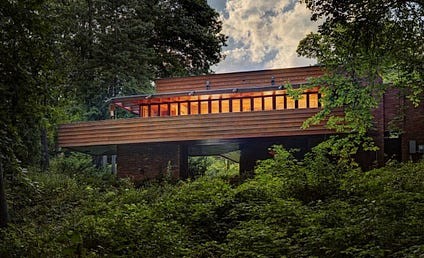 Map showing regions with stilt houses, promoting tourism
Map showing regions with stilt houses, promoting tourism
What Are Some Popular Destinations for Viewing and Experiencing Stilt House Culture?
Popular destinations for viewing and experiencing stilt house culture include:
- Vietnam: The Mekong Delta and rural villages offer authentic stilt house experiences. Consider SIXT.VN for reliable transportation and accommodation options. Address: 260 Cau Giay, Hanoi, Vietnam. Hotline/Whatsapp: +84 986 244 358.
- Thailand: Floating markets and traditional villages along the rivers showcase unique stilt house architecture.
- Indonesia: The islands of Borneo and Sumatra feature traditional stilt houses inhabited by indigenous communities.
What Cultural Etiquette Should Visitors Observe When Visiting Stilt House Communities?
Visitors should observe cultural etiquette by respecting local customs, asking permission before taking photos, dressing modestly, and supporting local businesses. Engaging respectfully with the community enhances the experience and promotes cultural preservation.
Navigating your travel plans can be challenging, but SIXT.VN is here to help. We offer comprehensive travel solutions, including airport transfers, hotel bookings, and customized tour packages, ensuring a seamless and enjoyable experience. Contact us today to start planning your unforgettable journey.
11. What Are the Potential Drawbacks to Living in a Stilt House?
Living in a stilt house presents potential drawbacks such as accessibility challenges, potential for structural instability, and vulnerability to strong winds. Overcoming these challenges requires careful design and maintenance.
- Accessibility Issues: Stilt houses may pose challenges for individuals with mobility impairments due to the elevated structure and stairs.
- Structural Instability: Improper construction or inadequate maintenance can lead to structural instability, making the house vulnerable to collapse.
- Vulnerability to Strong Winds: Elevated structures are more susceptible to strong winds, requiring robust construction and anchoring to prevent damage.
- Limited Space Underneath: While the space underneath can be utilized, it may be limited in size and not suitable for all purposes.
- Noise Transmission: Elevated structures can transmit noise more easily, potentially affecting privacy and comfort.
Are Stilt Houses Safe in Areas Prone to Earthquakes or Hurricanes?
Stilt houses can be safe in areas prone to earthquakes or hurricanes if they are designed and constructed to withstand these natural disasters. This includes using reinforced materials, robust anchoring systems, and earthquake-resistant designs.
How Can Accessibility Be Improved in Stilt House Design?
Accessibility can be improved in stilt house design by incorporating ramps, elevators, or lifts, providing easier access for individuals with mobility issues. Designing wider pathways and handrails can also enhance accessibility.
12. What Are the Key Considerations for Designing a Stilt House?
Key considerations for designing a stilt house include the structural integrity, environmental impact, local climate conditions, and cultural context. Addressing these factors ensures a safe, sustainable, and culturally appropriate design.
- Structural Integrity: Ensuring the stability and durability of the stilt foundation is crucial, requiring careful engineering and material selection.
- Environmental Impact: Minimizing the environmental footprint through the use of sustainable materials and construction practices is essential.
- Climate Conditions: Designing for local climate conditions, such as flood risk, humidity, and temperature, is necessary for comfort and durability.
- Cultural Context: Respecting local traditions and architectural styles ensures the house blends harmoniously with its surroundings.
- Functionality: Designing for optimal functionality, including accessibility, ventilation, and space utilization, enhances the living experience.
What Types of Foundations Are Best Suited for Stilt Houses?
The best types of foundations for stilt houses include concrete piers, steel piles, and treated wood posts, all of which provide stability and resistance to environmental factors. The choice of foundation depends on soil conditions, climate, and budget.
How Can Stilt Houses Be Designed to Be Energy Efficient?
Stilt houses can be designed to be energy efficient by incorporating passive cooling strategies, such as natural ventilation and shading, as well as active systems like solar panels and energy-efficient appliances. Proper insulation and sustainable materials also contribute to energy efficiency.
13. What Is the Role of Government and NGOs in Promoting Stilt House Construction?
The role of government and NGOs in promoting stilt house construction includes providing financial support, technical assistance, and regulatory frameworks that encourage sustainable and resilient housing solutions. Their involvement is vital for widespread adoption.
- Financial Support: Governments and NGOs can offer subsidies, grants, and low-interest loans to make stilt house construction more affordable for communities.
- Technical Assistance: Providing technical expertise and training on stilt house design and construction ensures that houses are built safely and sustainably.
- Regulatory Frameworks: Establishing clear building codes and regulations promotes the construction of safe and durable stilt houses.
- Community Engagement: Involving local communities in the planning and construction process ensures that stilt houses meet their specific needs and preferences.
- Advocacy and Awareness: Raising awareness about the benefits of stilt houses and advocating for their adoption can promote their widespread use.
Are There Government Programs That Support Stilt House Construction in Specific Regions?
Yes, there are government programs that support stilt house construction in specific regions prone to flooding or other environmental challenges. These programs often provide financial and technical assistance to promote resilient housing solutions.
How Do NGOs Contribute to the Development of Stilt House Communities?
NGOs contribute to the development of stilt house communities by providing resources, training, and support for sustainable housing, sanitation, education, and healthcare. Their efforts help improve the overall quality of life in these communities.
14. How Do Stilt Houses Compare to Other Types of Flood-Resistant Housing?
Stilt houses offer a practical and cost-effective solution compared to other types of flood-resistant housing, such as floating houses or elevated concrete structures. They provide a balance of affordability, sustainability, and cultural relevance.
- Cost-Effectiveness: Stilt houses are generally more affordable than other flood-resistant options, making them accessible to a wider range of communities.
- Sustainability: Stilt houses can be constructed using sustainable materials and have a lower environmental impact compared to concrete structures.
- Cultural Relevance: Stilt houses often reflect local traditions and architectural styles, making them culturally appropriate for many communities.
- Adaptability: Stilt houses can be adapted to different environments and construction needs, providing a flexible housing solution.
- Simplicity: The construction of stilt houses is relatively simple, requiring less specialized equipment and expertise compared to more complex flood-resistant designs.
What Are the Advantages and Disadvantages of Floating Houses Compared to Stilt Houses?
The advantages of floating houses include the ability to adapt to rising water levels and minimal impact on the surrounding environment. The disadvantages include higher construction costs, potential instability in rough waters, and dependence on specialized infrastructure.
In What Situations Are Elevated Concrete Structures More Suitable Than Stilt Houses?
Elevated concrete structures are more suitable than stilt houses in situations requiring greater structural strength, such as areas prone to earthquakes or severe storms. They also offer better protection against fire and can be more durable in the long term.
15. What Are the Future Trends in Stilt House Architecture?
Future trends in stilt house architecture include the integration of smart technologies, the use of sustainable materials, and the development of modular designs that can be easily adapted to different environments. These trends will shape the future of resilient and sustainable housing.
- Smart Technologies: Incorporating smart home systems for energy management, security, and comfort will enhance the living experience in stilt houses.
- Sustainable Materials: Using eco-friendly materials like bamboo, recycled wood, and composites will reduce the environmental impact of stilt house construction.
- Modular Designs: Developing modular stilt house designs will allow for faster and more efficient construction, as well as greater flexibility in adapting to different needs.
- Resilient Designs: Designing stilt houses to withstand extreme weather events, such as floods, hurricanes, and earthquakes, will enhance their safety and durability.
- Community-Based Approaches: Involving local communities in the planning and construction process will ensure that stilt houses meet their specific needs and preferences, promoting sustainable development.
How Will Technology Influence the Design and Functionality of Future Stilt Houses?
Technology will influence the design and functionality of future stilt houses by enabling the integration of smart home systems, sustainable energy technologies, and advanced construction methods. These innovations will enhance the efficiency, comfort, and environmental performance of stilt houses.
What Role Will Sustainable Materials Play in the Future of Stilt House Construction?
Sustainable materials will play a critical role in the future of stilt house construction by reducing the environmental footprint of buildings, promoting sustainable forestry practices, and enhancing the durability and resilience of structures.
Planning a trip to explore the unique architecture of Vietnam? SIXT.VN offers a range of services to make your journey seamless, including airport transfers, comfortable accommodations, and expertly guided tours. Contact us today and let us help you create an unforgettable experience. Address: 260 Cau Giay, Hanoi, Vietnam. Hotline/Whatsapp: +84 986 244 358.
FAQ: Why Are Houses Built on Stilts?
- Why are houses built on stilts in flood-prone areas? Houses are built on stilts in flood-prone areas to elevate the living space above potential floodwaters, protecting homes and ensuring safety.
- How do stilt houses help prevent pest infestations? Stilt houses minimize ground contact, reducing pathways for pests like rodents and insects to enter, thus aiding in pest control.
- What are the ventilation benefits of stilt houses? Stilt houses allow for natural airflow, reducing humidity and cooling the interior, which is particularly beneficial in warm climates.
- In what climates are stilt houses most suitable? Stilt houses are most suitable in tropical and subtropical climates with high rainfall and humidity.
- How do stilt houses maximize land use in uneven terrain? Stilts enable building on sloping or uneven land without extensive excavation, preserving the natural topography.
- What sustainable materials are commonly used in stilt house construction? Common sustainable materials include bamboo, timber, and recycled wood, reducing the environmental impact.
- What are the maintenance challenges for stilt houses? Maintenance challenges include wood rot, pest infestations, and ensuring structural stability, requiring regular inspections and repairs.
- How do modern innovations enhance stilt house design? Modern innovations include advanced materials, modular construction, and sustainable energy systems, improving durability and efficiency.
- Where can tourists experience stilt house culture? Tourists can experience stilt house culture in Southeast Asia, South America, and Africa, with opportunities to visit traditional villages.
- What role do governments and NGOs play in promoting stilt house construction? Governments and NGOs provide financial support, technical assistance, and regulatory frameworks to encourage sustainable stilt house construction.
Ready to explore Vietnam and its unique stilt house architecture? SIXT.VN offers tailored travel packages, reliable airport transfers, and comfortable hotel accommodations. Contact us today to plan your adventure and experience the beauty of Vietnam with ease. Address: 260 Cau Giay, Hanoi, Vietnam. Hotline/Whatsapp: +84 986 244 358. Website: SIXT.VN.



